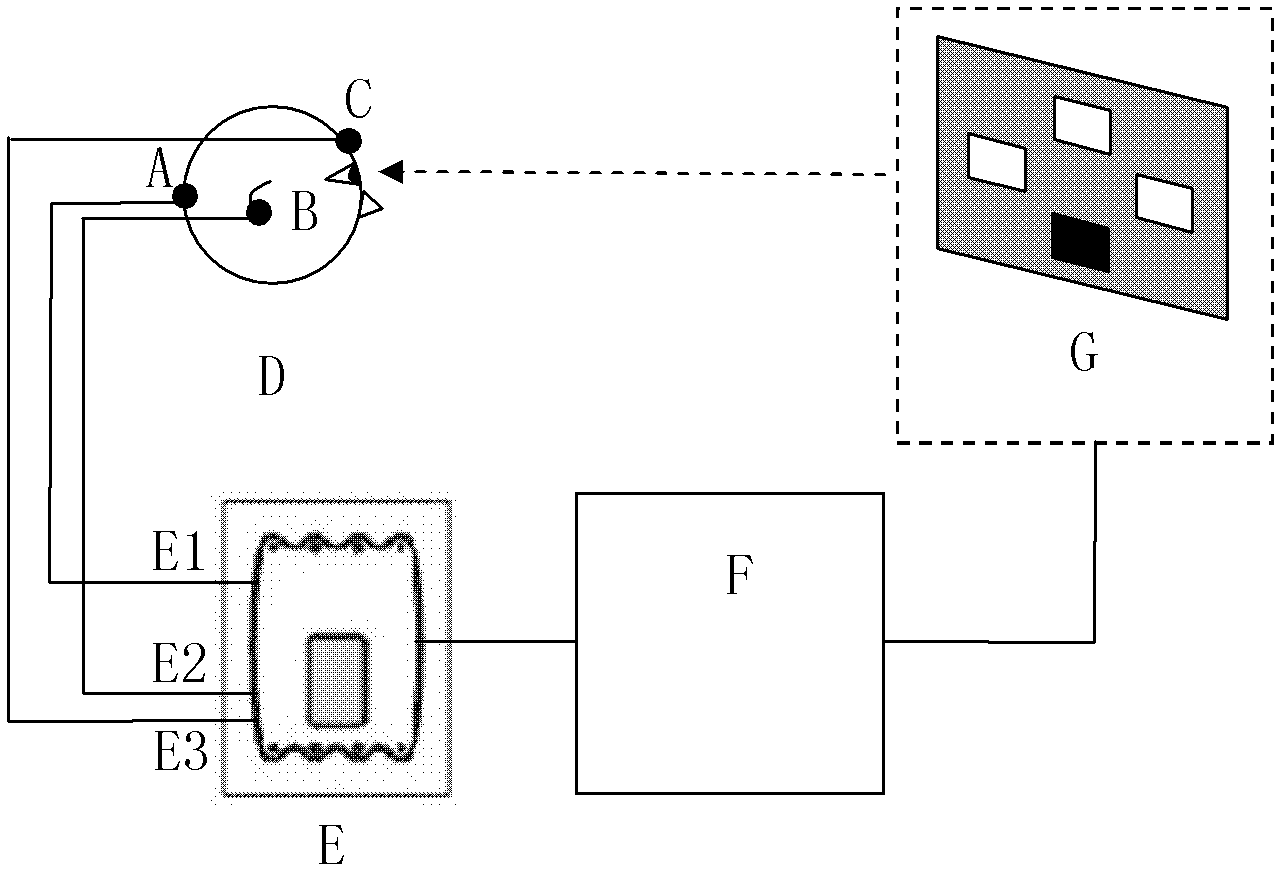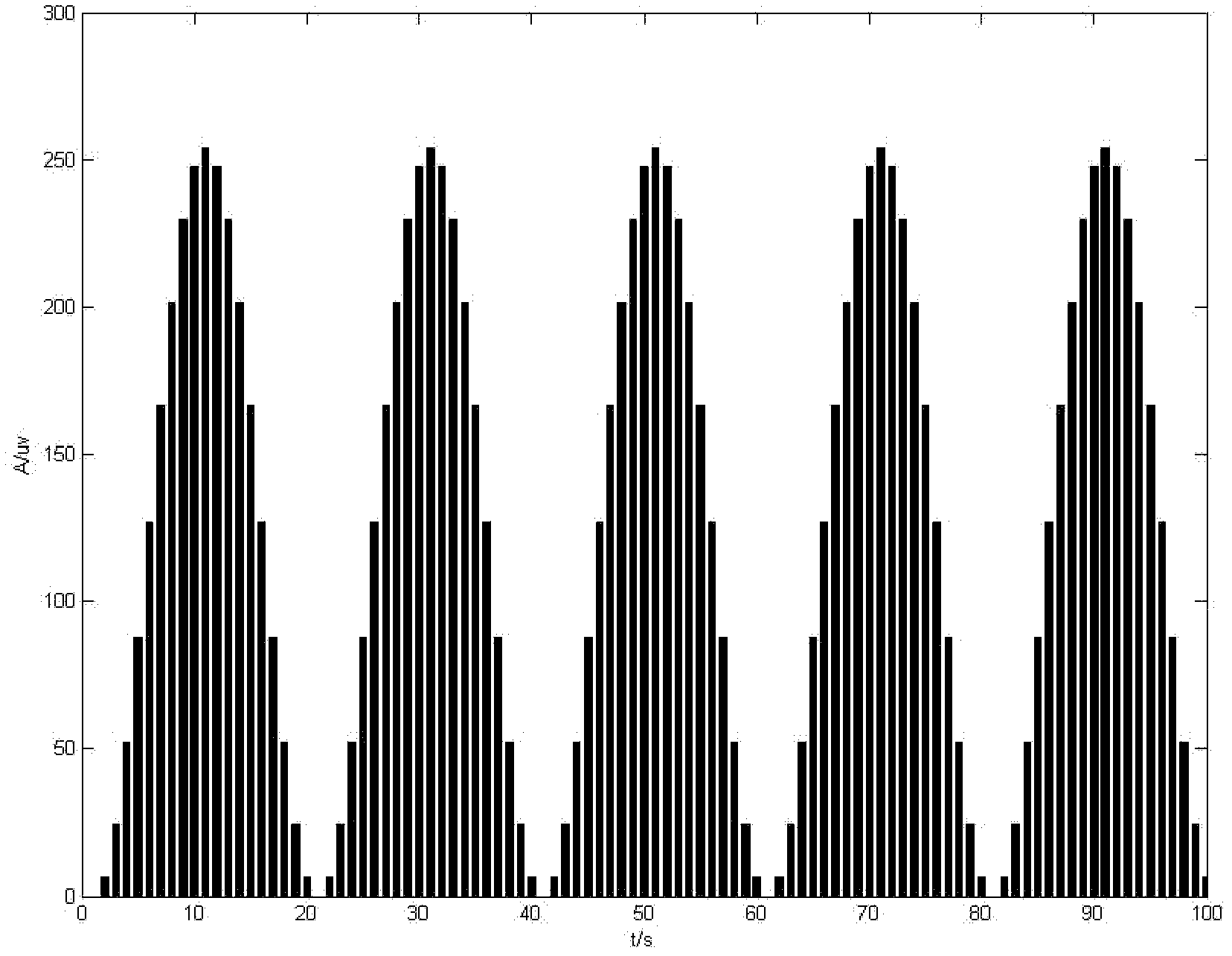Method for brain-computer interface based on amplitude modulated visual evoked potential
A visual evoked potential and amplitude modulation technology, applied in the field of brain-computer interface, can solve the problems of affecting real-time recognition ability, limited number of task targets, and low recognition efficiency of SSVEP
- Summary
- Abstract
- Description
- Claims
- Application Information
AI Technical Summary
Problems solved by technology
Method used
Image
Examples
Embodiment Construction
[0050] The present invention will be further described in detail below in conjunction with the accompanying drawings.
[0051] The brain-computer interface method based on amplitude modulation visual evoked potential comprises the following steps:
[0052] Step 1, refer to figure 1, place the measurement electrode A at the position Oz of the occipital region of the subject's head D, place the reference electrode B at the position of the earlobe on one side of the subject's head D, and place the ground electrode at the position Fpz of the forehead of the subject's head D C, the output terminal of the measuring electrode A is connected to the first input terminal E1 of the EEG amplifier E, the output terminal of the reference electrode B is connected to the second input terminal E2 of the EEG amplifier E, and the output terminal of the ground electrode C is connected to the EEG The third input terminal E3 of the amplifier E, the output terminal of the EEG amplifier E is connect...
PUM
 Login to View More
Login to View More Abstract
Description
Claims
Application Information
 Login to View More
Login to View More - R&D
- Intellectual Property
- Life Sciences
- Materials
- Tech Scout
- Unparalleled Data Quality
- Higher Quality Content
- 60% Fewer Hallucinations
Browse by: Latest US Patents, China's latest patents, Technical Efficacy Thesaurus, Application Domain, Technology Topic, Popular Technical Reports.
© 2025 PatSnap. All rights reserved.Legal|Privacy policy|Modern Slavery Act Transparency Statement|Sitemap|About US| Contact US: help@patsnap.com



